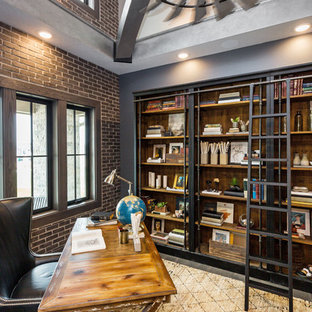Tile Style – An Introduction to the Various Types of Floor Tiles Available – Stone Tiles
 Stone tiles are very porous and extremely durable, that being said, I wouldn’t recommend them for floors. They can be prone to having a lot of imperfections and dips which can collect grout and completely change the look of the original tile. They must be sealed multiple times to ensure they remain waterproof just like slate tiles, and are not exactly easy to clean, therefore they are found to be a high maintenance tile over due course of time.
Stone tiles are very porous and extremely durable, that being said, I wouldn’t recommend them for floors. They can be prone to having a lot of imperfections and dips which can collect grout and completely change the look of the original tile. They must be sealed multiple times to ensure they remain waterproof just like slate tiles, and are not exactly easy to clean, therefore they are found to be a high maintenance tile over due course of time.
Stone tiles are best suited as a wall tile and can look really nice when done properly, but as a method of grouting this might be best done with the use of a cake icing bag in order to prevent the grout from spilling out from the grout lines and spoiling their natural appearance. This of course can be a slow and laborious procedure, and as stone tiles are very durable, sanded grout should be used.
I have successfully used them on a bathtub ledge where the corner tub rested on a frame. Not necessarily a place that I would want to put them if it were my house, but as they say “the customer is… usually right”. These tiles have a unique look all their own and no two tiles are alike. If this is the kind of look you are going for, then they can possibly be used, but once again, I wouldn’t recommend them. If you’re still stuck on this look, MAKE SURE to seal the tiles before you put them down, and again after grouting, even twice more for the grout sake.
These tiles are usually available in small sizes suited for wall tiling, and some can also come in small cut squares evenly spaced and stuck onto a mesh backing which can make sizing quite simple as only the mesh need be cut. However, if it is necessary to cut the stone tiles, then this is best done with the angle grinder and diamond blade only, avoiding the wet tile saw option.
They can be quite expensive to buy compared to other tiling options, and as for laying the tile; regular mortar is good enough with a bed created by a 3/8″ x 1/4″ inch notched trowel. Grout spacing is best advisable at around 1/8″ inch lines, however if the mesh backing stone tiles are purchased, then the appropriate grout spacing is already determined for you, and using sanded grout as the recommended filler.
